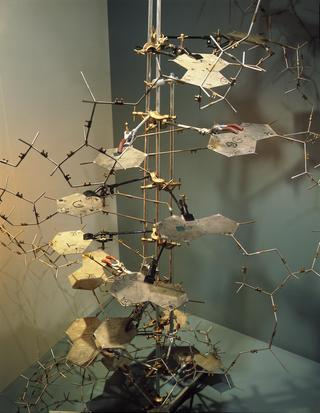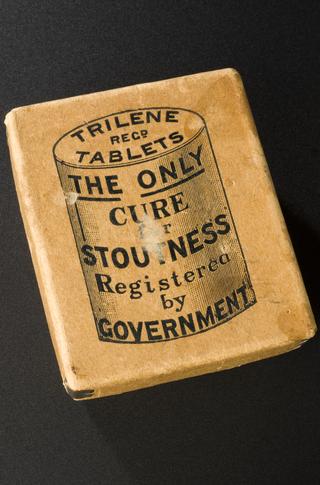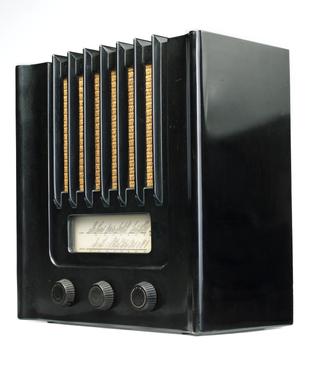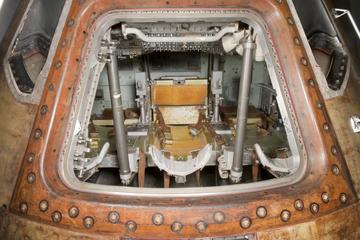




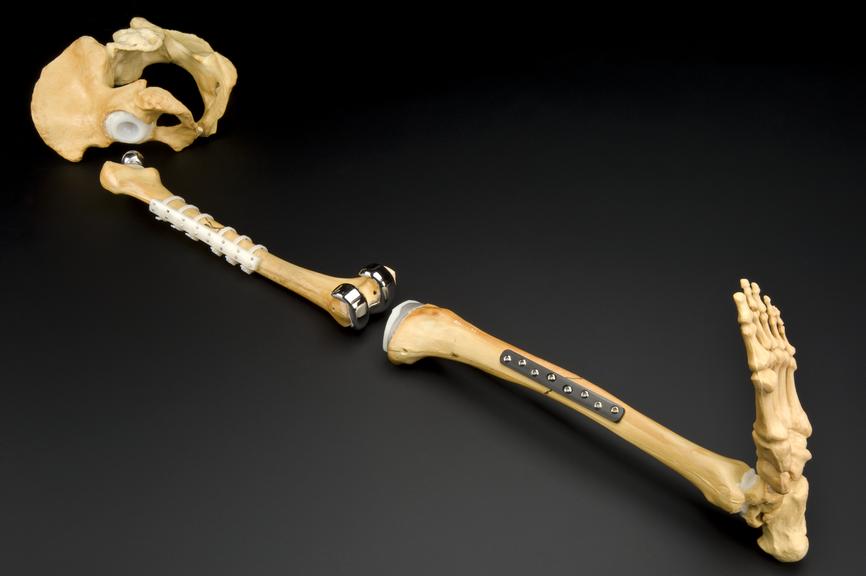



Skeletal leg made from polyurethane foam bones with hip replacement and spare hip prosthesis, knee replacement, nylon bone splint, carbon fibre epoxy resin bone splint, both attached by stainles steel screws
Made from polyurethane, these moulded human leg-shaped bones have been fitted with a number of orthopaedic appliances which date from the late twentieth century. The top joint shows a hip replacement made from titanium and a durable plastic; the knee joint has been entirely replaced by titanium and plastic. A splint, which is used to hold the leg rigid and so help fractures repair, has been fitted to the long femur bone (between the hip and the knee) and there is another attached to the fibula (the bone between the knee and the ankle).
The appliances are made from inert materials that tend not to trigger a potentially damaging rejection response by the body’s immune system.
Details
- Category:
- Plastics and Modern Materials
- Object Number:
- 1985-1375
- Materials:
- nylon, expoxy resin, stainless, titanium and foam
- Measurements:
-
overall: 1150 mm x 290 mm x 210 mm,
femur: 440 mm x 70 mm x 90 mm, .65kg
tibia and fibia: 445 mm x 225 mm x 110 mm,
pelvis: 265 mm x 290 mm x 210 mm, .29kg
- type:
- model
- credit:
- North Staffordshire Polytechnic. Biomedi
